-
EXECUTIVE SUMMARY
-
MARKET INTRODUCTION
-
Definition
-
Scope of the Study
- Research Objective
- Assumptions
- Limitations
-
RESEARCH METHODOLOGY
-
Overview
-
Data Mining
-
Secondary Research
-
Primary Research
- Primary Interviews and Information Gathering Process
- Breakdown of Primary Respondents
-
Forecasting Modality
-
Market Size Estimation
- Bottom-Up Approach
- Top-Down Approach
-
Data Triangulation
-
Validation
-
MARKET DYNAMICS
-
Overview
-
Drivers
-
Restraints
-
Opportunities
-
MARKET FACTOR ANALYSIS
-
Value Chain Analysis
-
Porter’s Five Forces Analysis
- Bargaining Power of Suppliers
- Bargaining Power of Buyers
- Threat of New Entrants
- Threat of Substitutes
- Intensity of Rivalry
-
COVID-19 Impact Analysis
- Market Impact Analysis
- Regional Impact
- Opportunity and Threat Analysis
-
GLOBAL PERSONAL HYGIENE MARKET, BY PRODUCT
-
Overview
-
Soaps
-
Hand Sanitizers
-
Bath and Shower Products
-
Face Care Products
-
Other Products
-
GLOBAL PERSONAL HYGIENE MARKET, BY GENDER
-
Overview
-
Unisex
-
Male
-
Female
-
GLOBAL PERSONAL HYGIENE MARKET, BY DISTRIBUTION CHANNEL
-
Overview
-
Retail Pharmacies
-
Hospital based Pharmacies
-
Supermarkets
-
E-commerce
-
GLOBAL PERSONAL HYGIENE MARKET, BY REGION
-
Overview
-
North America
- U.S.
- Canada
-
Europe
- Germany
- France
- U.K
- Italy
- Spain
- Rest of Europe
-
Asia-Pacific
- China
- India
- Japan
- South Korea
- Australia
- Rest of Asia-Pacific
-
Rest of the World
- Middle East
- Africa
- Latin America
-
COMPETITIVE LANDSCAPE
-
Overview
-
Competitive Analysis
-
Market Share Analysis
-
Major Growth Strategy in the Global Personal hygiene Market,
-
Competitive Benchmarking
-
Leading Players in Terms of Number of Developments in the Global Personal hygiene Market,
-
Key developments and Growth Strategies
- New Product Launch/Gender Deployment
- Merger & Acquisitions
- Joint Ventures
-
Major Players Financial Matrix
- Sales & Operating Income, 2022
- Major Players R&D Expenditure. 2022
-
COMPANY PROFILES
-
3M
- Company Overview
- Financial Overview
- Products Offered
- Key Developments
- SWOT Analysis
- Key Strategies
-
Johnson & Johnson
- Company Overview
- Financial Overview
- Products Offered
- Key Developments
- SWOT Analysis
- Key Strategies
-
Unilever
- Company Overview
- Financial Overview
- Products Offered
- Key Developments
- SWOT Analysis
- Key Strategies
-
P&G
- Company Overview
- Financial Overview
- Products Offered
- Key Developments
- SWOT Analysis
- Key Strategies
-
Syndy Pharma
- Company Overview
- Financial Overview
- Products Offered
- Key Developments
- SWOT Analysis
- Key Strategies
-
COLGATE-PALMOLIVE COMPANY
- Company Overview
- Financial Overview
- Products Offered
- Key Developments
- SWOT Analysis
- Key Strategies
-
B. Braun Melsungen
- Company Overview
- Financial Overview
- Products Offered
- Key Developments
- SWOT Analysis
- Key Strategies
-
HARTMANN
- Company Overview
- Financial Overview
- Products Offered
- Key Developments
- SWOT Analysis
- Key Strategies
-
Kimberly-Clark Corporation
- Company Overview
- Financial Overview
- Products Offered
- Key Developments
- SWOT Analysis
- Key Strategies
-
Reckitt Benckiser Group
- Company Overview
- Financial Overview
- Products Offered
- Key Developments
- SWOT Analysis
- Key Strategies
-
APPENDIX
-
References
-
Related Reports
-
-
LIST OF TABLES
-
GLOBAL PERSONAL HYGIENE MARKET, SYNOPSIS, 2018-2032
-
GLOBAL PERSONAL HYGIENE MARKET, ESTIMATES & FORECAST, 2018-2032 (USD BILLION)
-
GLOBAL PERSONAL HYGIENE MARKET, BY PRODUCT, 2018-2032 (USD BILLION)
-
GLOBAL PERSONAL HYGIENE MARKET, BY GENDER, 2018-2032 (USD BILLION)
-
GLOBAL PERSONAL HYGIENE MARKET, BY DISTRIBUTION CHANNEL, 2018-2032 (USD BILLION)
-
NORTH AMERICA PERSONAL HYGIENE MARKET, BY PRODUCT, 2018-2032 (USD BILLION)
-
NORTH AMERICA PERSONAL HYGIENE MARKET, BY GENDER, 2018-2032 (USD BILLION)
-
NORTH AMERICA PERSONAL HYGIENE MARKET, BY DISTRIBUTION CHANNEL, 2018-2032 (USD BILLION)
-
NORTH AMERICA PERSONAL HYGIENE MARKET, BY COUNTRY, 2018-2032 (USD BILLION)
-
U.S. PERSONAL HYGIENE MARKET, BY PRODUCT, 2018-2032 (USD BILLION)
-
U.S. PERSONAL HYGIENE MARKET, BY GENDER, 2018-2032 (USD BILLION)
-
U.S. PERSONAL HYGIENE MARKET, BY DISTRIBUTION CHANNEL, 2018-2032 (USD BILLION)
-
CANADA PERSONAL HYGIENE MARKET, BY PRODUCT, 2018-2032 (USD BILLION)
-
CANADA PERSONAL HYGIENE MARKET, BY GENDER, 2018-2032 (USD BILLION)
-
CANADA PERSONAL HYGIENE MARKET, BY DISTRIBUTION CHANNEL, 2018-2032 (USD BILLION)
-
EUROPE PERSONAL HYGIENE MARKET, BY PRODUCT, 2018-2032 (USD BILLION)
-
EUROPE PERSONAL HYGIENE MARKET, BY GENDER, 2018-2032 (USD BILLION)
-
EUROPE PERSONAL HYGIENE MARKET, BY DISTRIBUTION CHANNEL, 2018-2032 (USD BILLION)
-
EUROPE PERSONAL HYGIENE MARKET, BY COUNTRY, 2018-2032 (USD BILLION)
-
GERMANY PERSONAL HYGIENE MARKET, BY PRODUCT, 2018-2032 (USD BILLION)
-
GERMANY PERSONAL HYGIENE MARKET, BY GENDER, 2018-2032 (USD BILLION)
-
GERMANY PERSONAL HYGIENE MARKET, BY DISTRIBUTION CHANNEL, 2018-2032 (USD BILLION)
-
FRANCE PERSONAL HYGIENE MARKET, BY PRODUCT, 2018-2032 (USD BILLION)
-
FRANCE PERSONAL HYGIENE MARKET, BY GENDER, 2018-2032 (USD BILLION)
-
FRANCE PERSONAL HYGIENE MARKET, BY DISTRIBUTION CHANNEL, 2018-2032 (USD BILLION)
-
ITALY PERSONAL HYGIENE MARKET, BY PRODUCT, 2018-2032 (USD BILLION)
-
ITALY PERSONAL HYGIENE MARKET, BY GENDER, 2018-2032 (USD BILLION)
-
ITALY PERSONAL HYGIENE MARKET, BY DISTRIBUTION CHANNEL, 2018-2032 (USD BILLION)
-
SPAIN PERSONAL HYGIENE MARKET, BY PRODUCT, 2018-2032 (USD BILLION)
-
SPAIN PERSONAL HYGIENE MARKET, BY GENDER, 2018-2032 (USD BILLION)
-
SPAIN PERSONAL HYGIENE MARKET, BY DISTRIBUTION CHANNEL, 2018-2032 (USD BILLION)
-
U.K PERSONAL HYGIENE MARKET, BY PRODUCT, 2018-2032 (USD BILLION)
-
U.K PERSONAL HYGIENE MARKET, BY GENDER, 2018-2032 (USD BILLION)
-
U.K PERSONAL HYGIENE MARKET, BY DISTRIBUTION CHANNEL, 2018-2032 (USD BILLION)
-
REST OF EUROPE PERSONAL HYGIENE MARKET, BY PRODUCT, 2018-2032 (USD BILLION)
-
REST OF EUROPE PERSONAL HYGIENE MARKET, BY GENDER, 2018-2032 (USD BILLION)
-
REST OF EUROPE PERSONAL HYGIENE MARKET, BY DISTRIBUTION CHANNEL, 2018-2032 (USD BILLION)
-
ASIA PACIFIC PERSONAL HYGIENE MARKET, BY PRODUCT, 2018-2032 (USD BILLION)
-
ASIA PACIFIC PERSONAL HYGIENE MARKET, BY GENDER, 2018-2032 (USD BILLION)
-
ASIA PACIFIC PERSONAL HYGIENE MARKET, BY DISTRIBUTION CHANNEL, 2018-2032 (USD BILLION)
-
ASIA PACIFIC PERSONAL HYGIENE MARKET, BY COUNTRY, 2018-2032 (USD BILLION)
-
JAPAN PERSONAL HYGIENE MARKET, BY PRODUCT, 2018-2032 (USD BILLION)
-
JAPAN PERSONAL HYGIENE MARKET, BY GENDER, 2018-2032 (USD BILLION)
-
JAPAN PERSONAL HYGIENE MARKET, BY DISTRIBUTION CHANNEL, 2018-2032 (USD BILLION)
-
CHINA PERSONAL HYGIENE MARKET, BY PRODUCT, 2018-2032 (USD BILLION)
-
CHINA PERSONAL HYGIENE MARKET, BY GENDER, 2018-2032 (USD BILLION)
-
CHINA PERSONAL HYGIENE MARKET, BY DISTRIBUTION CHANNEL, 2018-2032 (USD BILLION)
-
INDIA PERSONAL HYGIENE MARKET, BY PRODUCT, 2018-2032 (USD BILLION)
-
INDIA PERSONAL HYGIENE MARKET, BY GENDER, 2018-2032 (USD BILLION)
-
INDIA PERSONAL HYGIENE MARKET, BY DISTRIBUTION CHANNEL, 2018-2032 (USD BILLION)
-
AUSTRALIA PERSONAL HYGIENE MARKET, BY PRODUCT, 2018-2032 (USD BILLION)
-
AUSTRALIA PERSONAL HYGIENE MARKET, BY GENDER, 2018-2032 (USD BILLION)
-
AUSTRALIA PERSONAL HYGIENE MARKET, BY DISTRIBUTION CHANNEL, 2018-2032 (USD BILLION)
-
SOUTH KOREA PERSONAL HYGIENE MARKET, BY PRODUCT, 2018-2032 (USD BILLION)
-
SOUTH KOREA PERSONAL HYGIENE MARKET, BY GENDER, 2018-2032 (USD BILLION)
-
SOUTH KOREA PERSONAL HYGIENE MARKET, BY DISTRIBUTION CHANNEL, 2018-2032 (USD BILLION)
-
REST OF ASIA-PACIFIC PERSONAL HYGIENE MARKET, BY PRODUCT, 2018-2032 (USD BILLION)
-
REST OF ASIA-PACIFIC PERSONAL HYGIENE MARKET, BY GENDER, 2018-2032 (USD BILLION)
-
REST OF ASIA-PACIFIC PERSONAL HYGIENE MARKET, BY DISTRIBUTION CHANNEL, 2018-2032 (USD BILLION)
-
REST OF WORLD PERSONAL HYGIENE MARKET, BY PRODUCT, 2018-2032 (USD BILLION)
-
REST OF WORLD PERSONAL HYGIENE MARKET, BY GENDER, 2018-2032 (USD BILLION)
-
REST OF WORLD PERSONAL HYGIENE MARKET, BY DISTRIBUTION CHANNEL, 2018-2032 (USD BILLION)
-
REST OF WORLD PERSONAL HYGIENE MARKET, BY COUNTRY, 2018-2032 (USD BILLION)
-
MIDDLE EAST PERSONAL HYGIENE MARKET, BY PRODUCT, 2018-2032 (USD BILLION)
-
MIDDLE EAST PERSONAL HYGIENE MARKET, BY GENDER, 2018-2032 (USD BILLION)
-
MIDDLE EAST PERSONAL HYGIENE MARKET, BY DISTRIBUTION CHANNEL, 2018-2032 (USD BILLION)
-
AFRICA PERSONAL HYGIENE MARKET, BY PRODUCT, 2018-2032 (USD BILLION)
-
AFRICA PERSONAL HYGIENE MARKET, BY GENDER, 2018-2032 (USD BILLION)
-
AFRICA PERSONAL HYGIENE MARKET, BY DISTRIBUTION CHANNEL, 2018-2032 (USD BILLION)
-
LATIN AMERICA PERSONAL HYGIENE MARKET, BY PRODUCT, 2018-2032 (USD BILLION)
-
LATIN AMERICA PERSONAL HYGIENE MARKET, BY GENDER, 2018-2032 (USD BILLION)
-
LATIN AMERICA PERSONAL HYGIENE MARKET, BY DISTRIBUTION CHANNEL, 2018-2032 (USD BILLION)
-
LIST OF FIGURES
-
RESEARCH PROCESS
-
MARKET STRUCTURE FOR THE GLOBAL PERSONAL HYGIENE MARKET
-
MARKET DYNAMICS FOR THE GLOBAL PERSONAL HYGIENE MARKET
-
GLOBAL PERSONAL HYGIENE MARKET, SHARE (%), BY PRODUCT, 2022
-
GLOBAL PERSONAL HYGIENE MARKET, SHARE (%), BY GENDER, 2022
-
GLOBAL PERSONAL HYGIENE MARKET, SHARE (%), BY DISTRIBUTION CHANNEL, 2022
-
GLOBAL PERSONAL HYGIENE MARKET, SHARE (%), BY REGION, 2022
-
NORTH AMERICA: PERSONAL HYGIENE MARKET, SHARE (%), BY REGION, 2022
-
EUROPE: PERSONAL HYGIENE MARKET, SHARE (%), BY REGION, 2022
-
ASIA-PACIFIC: PERSONAL HYGIENE MARKET, SHARE (%), BY REGION, 2022
-
REST OF THE WORLD: PERSONAL HYGIENE MARKET, SHARE (%), BY REGION, 2022
-
GLOBAL PERSONAL HYGIENE MARKET: COMPANY SHARE ANALYSIS, 2022 (%)
-
3M: FINANCIAL OVERVIEW SNAPSHOT
-
3M: SWOT ANALYSIS
-
JOHNSON & JOHNSON: FINANCIAL OVERVIEW SNAPSHOT
-
JOHNSON & JOHNSON: SWOT ANALYSIS
-
UNILEVER: FINANCIAL OVERVIEW SNAPSHOT
-
UNILEVER: SWOT ANALYSIS
-
P&G: FINANCIAL OVERVIEW SNAPSHOT
-
P&G: SWOT ANALYSIS
-
SYNDY PHARMA.: FINANCIAL OVERVIEW SNAPSHOT
-
SYNDY PHARMA.: SWOT ANALYSIS
-
COLGATE-PALMOLIVE COMPANY: FINANCIAL OVERVIEW SNAPSHOT
-
COLGATE-PALMOLIVE COMPANY: SWOT ANALYSIS
-
B. BRAUN MELSUNGEN: FINANCIAL OVERVIEW SNAPSHOT
-
B. BRAUN MELSUNGEN: SWOT ANALYSIS
-
HARTMANN: FINANCIAL OVERVIEW SNAPSHOT
-
HARTMANN: SWOT ANALYSIS
-
KIMBERLY-CLARK CORPORATION: FINANCIAL OVERVIEW SNAPSHOT
-
KIMBERLY-CLARK CORPORATION: SWOT ANALYSIS
-
RECKITT BENCKISER GROUP: FINANCIAL OVERVIEW SNAPSHOT
-
RECKITT BENCKISER GROUP: SWOT ANALYSIS
-
'

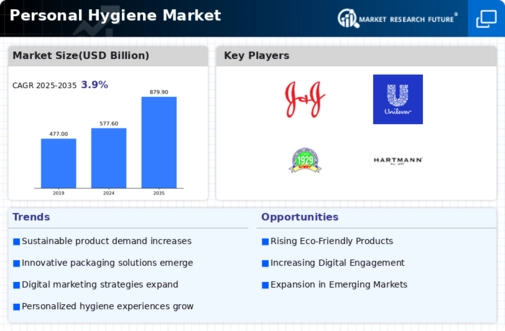
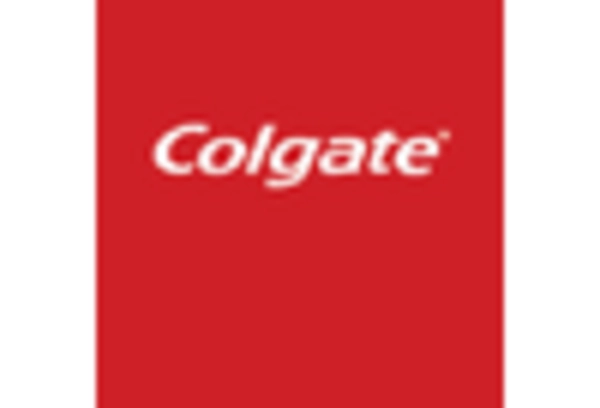

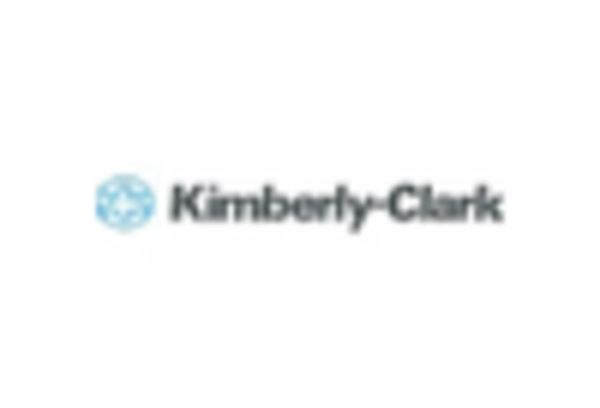
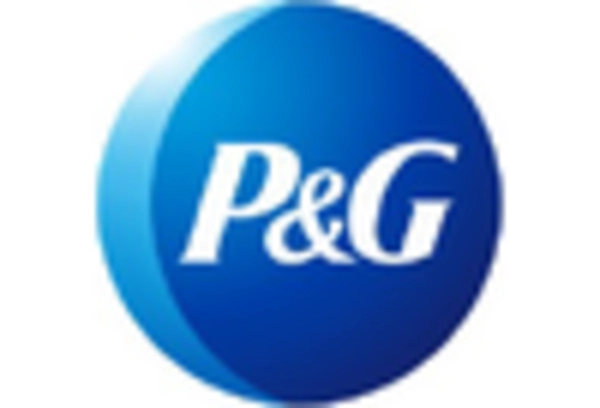
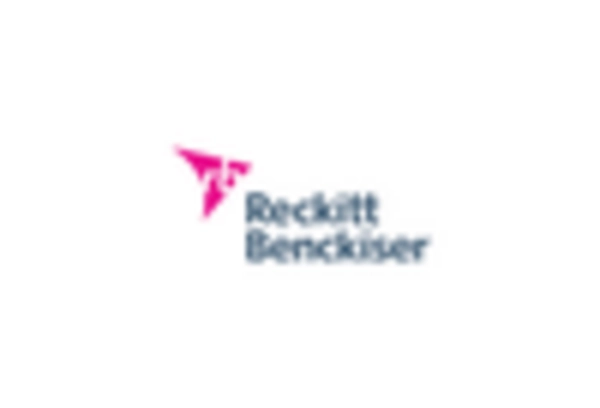
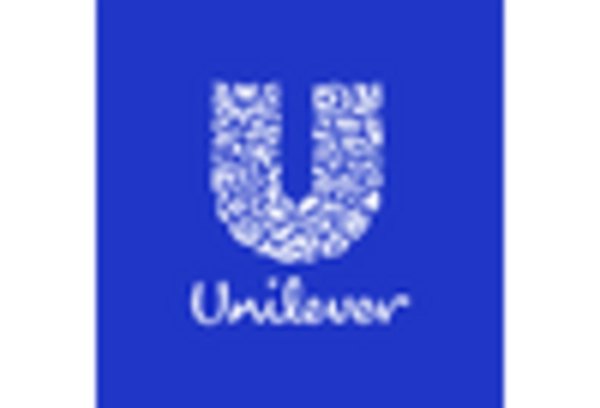









Leave a Comment